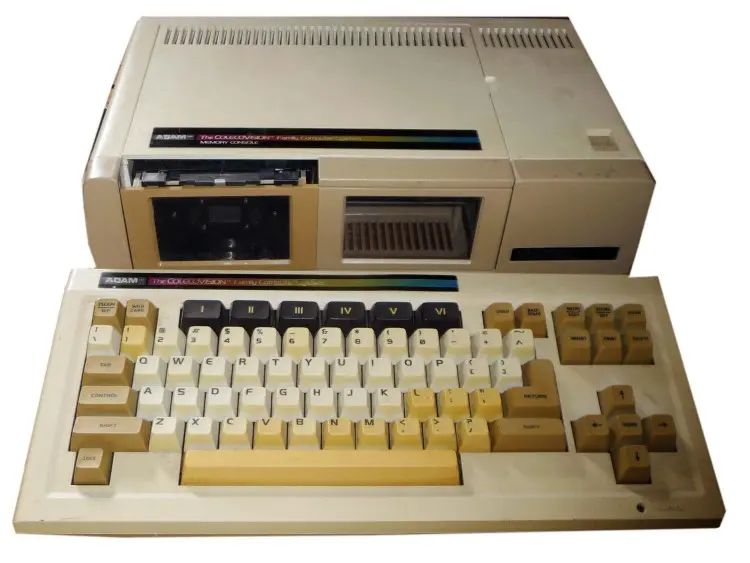The Coleco Adam computer
The Coleco Adam is an 8-bit home computer released by Coleco in 1983. It was developed as a successor of the ColecoVision console. When it was introduced at the Consumer Electronics Show in 1983 it was shown running a port of the ColecoVision game Donkey Kong. This caused some trouble as it was Atari which had the exclusive rights to the game for the home computer market, Coleco only had a license for game consoles. In the end Coleco had to sign an agreement to not sell the Adam version of the game.
A lot of software for the Adam was derived from the ColecoVision as a lot of the hardware is the same. In addition, the Adam can run CP/M and had dedicated support processors (3 Motorola 6801s @1MHz) to control Memory I/O, the keyboard, and the tape interface. There were 3 internal expansion slots, 1 external cartridge slot and a half-duplex serial bus called AdamNet that ran 62.5kBit per second.
Later Coleco produced a conversion kit, that would convert the ColecoVision to a full Adam computer
TMS9918 Series Video Display Processor (99n8, 99n9, 91n8, 91n9)
The TMS9918 is a series of video display controllers (VDC) manufactured in 1979 by Texas Instruments, also refered to as 'Video Display Processor' (VDP). The TMS9918 and its variants were used in the ColecoVision, CreatiVision, Memotech MTX, MSX, NABU Personal Computer, SG-1000/SC-3000, Spectravideo SV-318, Spectravideo SV-328, Sord M5, Tatung Einstein, Texas Instruments TI-99/4, Casio PV-2000, Coleco Adam, Hanimex Pencil II, and Tomy Tutor.
Key Features:
- 256x192 pattern based color pixels per screen
- 16 different colors
- 8-bit memory mapped CPU interface
- No need for DMA, CPU can access VRAM
- 32 single color Sprites per screen (4 per scanline)
Variants:
- TMS9918A - 60Hz output, NTSC video
- TMS9928A - 60Hz output, YPbPr video
- TMS9929A - 50Hz output, YPbPr video
- TMS9118 - Different RAM than TMS9918A, otherwise identical
- TMS9128 - Different RAM than TMS9928A, otherwise identical
- TMS9129 - Different RAM than TMS9929A, otherwise identical
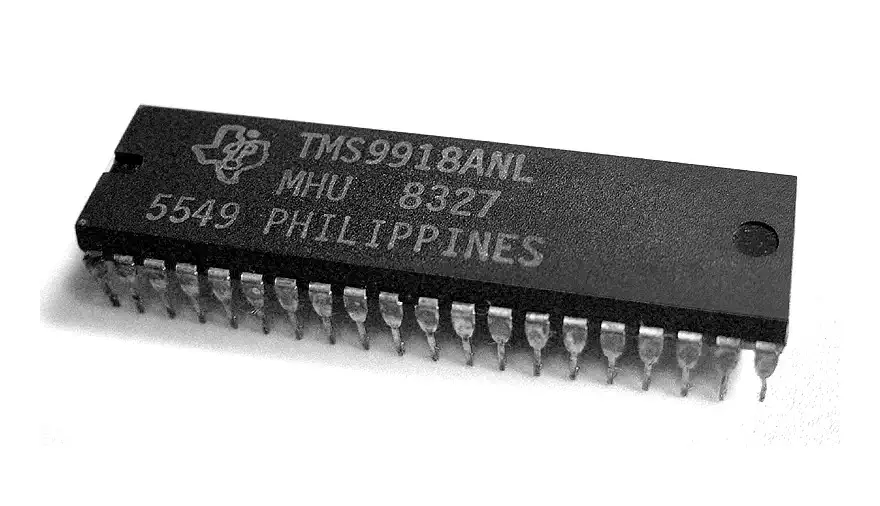
Texas Instruments SN76489 Sound Generator
The SN76489 Digital Complex Sound Generator (DCSG) is a TTL compatible programmable sound generator chip created by Texas Instruments. It main application was the generation of music and sound effects in home computers, arcade machines and home game consoles. Functionally the chip was similar to the General Instrument AY-3-8910.
Sound Capabilities:
- 3 Square Wave tone generators, 16 volume levels
- 1 White Noise Generator (white and periodic noice, 3 frequencies, 16 volumes)
The SN76489 Was originally designed to be used in the TI-99/4 computer, where it was first called the TMS9919 and later SN94624, and had a 500 kHz max clock input rate. Later, when it was sold outside of TI, it was renamed the SN76489, and a divide-by-8 was added to its clock input, increasing the max clock input rate to 4 MHz, to facilitate sharing a crystal for both NTSC colorburst and clocking the sound chip. A version of the chip without the divide-by-8 input was also sold outside of TI a
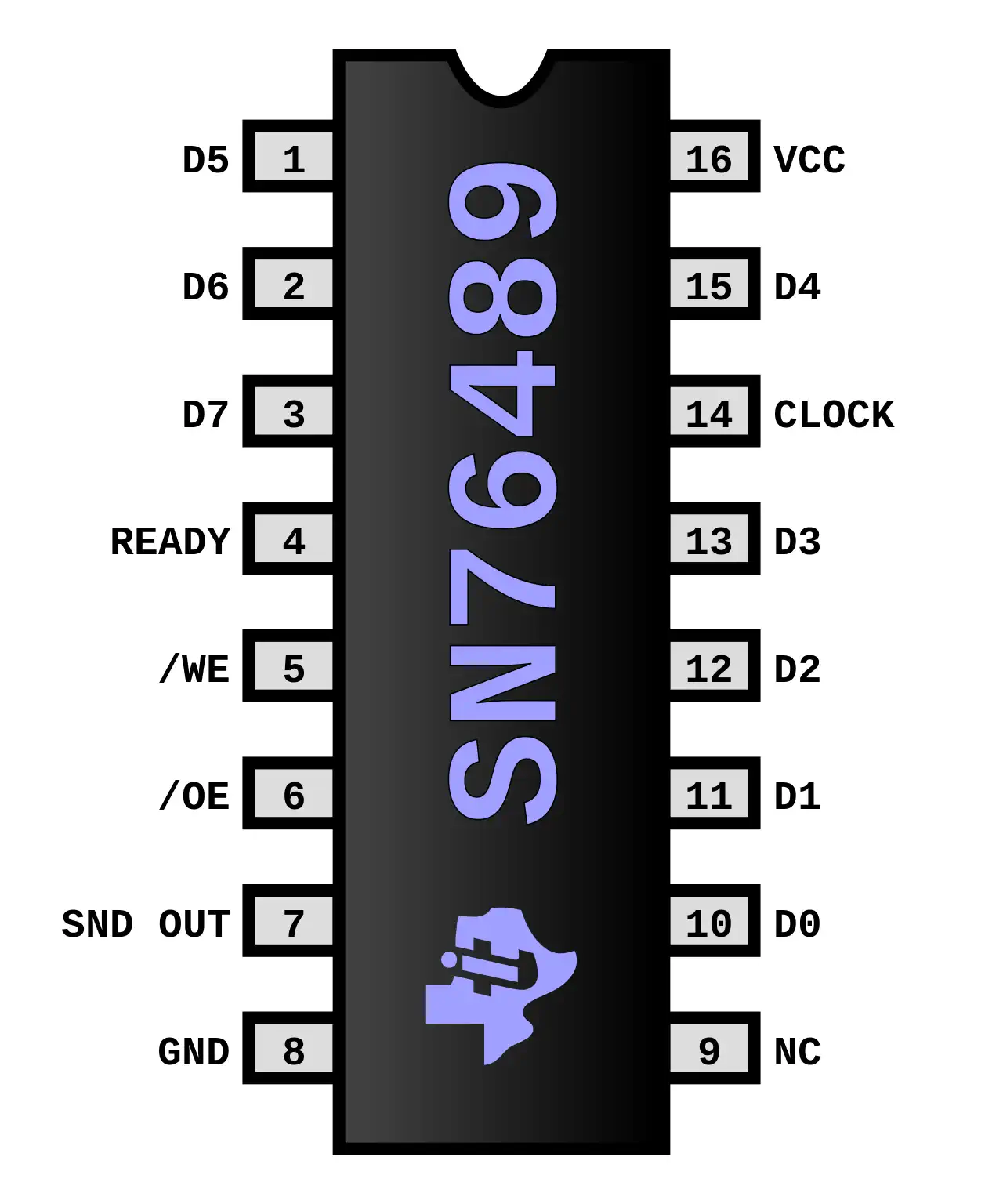
CPU View - Zilog Z80 Family
The Z80 quickly became popular in the personal computer market, with many early personal computers, such as the TRS-80 and Sinclair ZX80, using the Z80 as their central processing unit (CPU). It was also widely used in home computers, such as the MSX range, SORD, and the Amstrad CPC, as well as in many arcade games. Additionally, it was also used in other applications such as industrial control systems, and embedded systems. The Z80 was widely used until the mid-1980s, when it was gradually replaced by newer microprocessors such as the Intel 80286 and the Motorola 68000.
The Z80 microprocessor was developed by Zilog, a company founded by Federico Faggin in 1974. The Z80 was released in July 1976, as a successor to the Intel 8080. It was designed to be fully compatible with the 8080, but also included new features such as an improved instruction set, more powerful interrupts, and a more sophisticated memory management system.
The Z80 quickly became popular in the personal computer
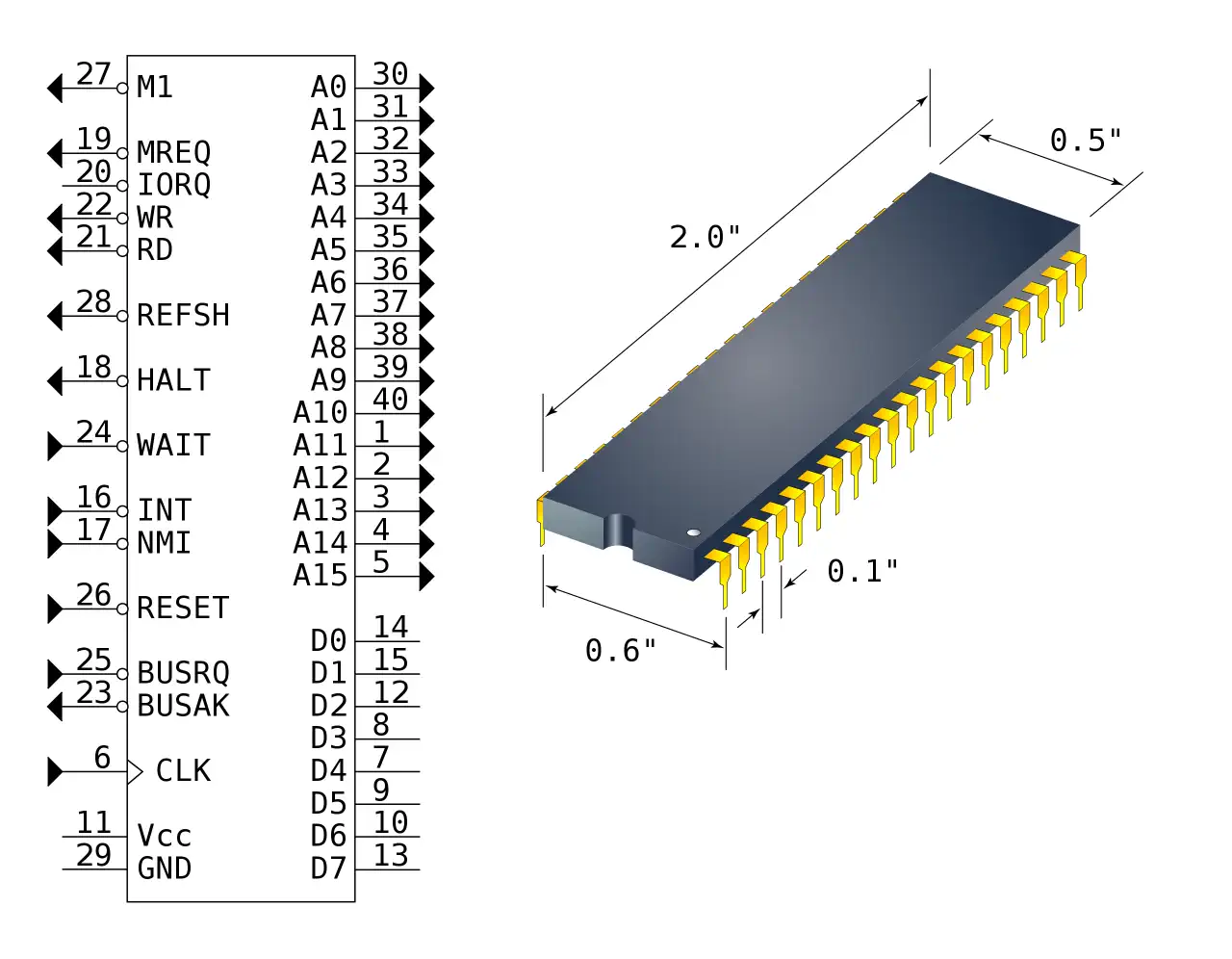
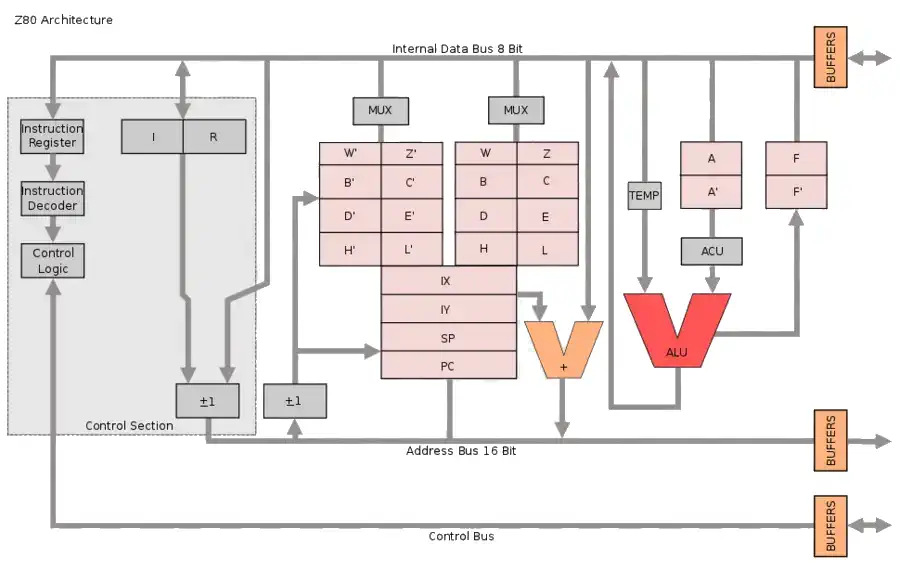
ROM: 32kB
VRAM: 16kB Sound Chip Texas Instruments SN76489AN Sound 3 wave channels + white noise Display Chip Texas Instruments TMS992A VDP Display 40x24 text
32x24 16 color text, pattern based
256x192 16 color, 2 color per 8 pix. Best Text 40x24 Best Color 16 colors (2 per 8 pixels) Graphics 256x192 16 colors (2 per 8 pixels) Sprites 1 color, 16x16, 4/scanline, 32 total System OS Proprietary
